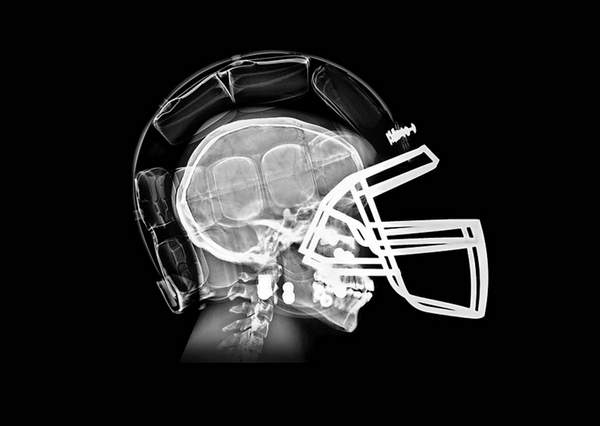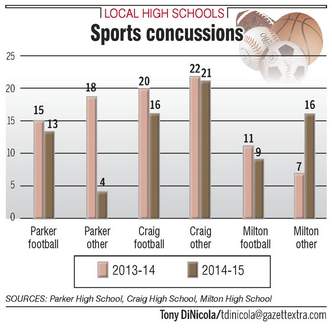
Milton High School had 411 students on sports teams last year. About one in 16 of them suffered a concussion.
The 25 concussions reported in Milton last year were up from 18 the year before.
Is that a trend or has modern medicine found a better way to track and diagnose concussions?
The answer lies somewhere in between.
Twenty years ago, concussions were an afterthought in high school sports. A bump on the head was a bump on the head.
Usually, a player who could tell his coach how many fingers he was holding up was sent back into the game.
Times have changed.

Head injuries are getting serious attention. A concussion—defined as a brain injury caused by a blow to the head or a violent shaking of the head and body—can have debilitating, long-term effects if not treated properly.
Kathy Calkins, a licensed athletic trainer and the head trainer at Janesville Craig, said an increase in documented concussions is due in part to new terminology used to define concussions.
The old definition of a concussion was somebody getting a bump on the head that caused short-term memory loss or a headache. Now, concussions are clearly defined as impaired functioning of some organ, especially the brain, as a result of a violent blow or impact.
Testing has become more sophisticated, too.
Neurocognitive testing is a more scientific alternative to athletes self-reporting after injury. The testing focuses primarily on memory, attention to detail or problem solving. Relying only on athletes’ reports of symptoms might result in them returning to competition prematurely, exposing them to additional injury.
ImPACT testing is a type of neurocognitive test often used by physicians to compare athletes’ post-concussion abilities to baseline scores taken before the injury.
Although ImPACT testing is a valuable tool, most athletes who suffer concussions don’t go through the test before being cleared to return.
Of the 37 documented concussions at Craig during the 2014-15 calendar year, only six athletes went through ImPACT testing before they were allowed to continue any physical activity.
Since 2010, Janesville Parker has documented 92 concussions, with a high of 27 in 2013. Of those 92 concussions, 53 were football-related.
Parker has had 652 athletes out for football since 2010, meaning about one out of every 12 football players in that time suffered a concussion.
The football-related concussions dropped to 11 last year after a documented high of 15 in the 2013 season.
Parker had 740 students participate in a sport during the 2014-15 calendar year, and 26 reported concussions. That means about one out of every 28 suffered a concussion. The Parker participation total counts each student only once regardless of how many sports he or she played.
Morgan Mason, Parker’s head trainer, said the concussion numbers at the school could be misleading.
“In the fall, we tend to devote a lot of time to football and their athletes,” Mason said. “Boys soccer (also a fall sport), in my position, tends to not frequent the athletic training room as much as they probably should, so the numbers get skewed from that.
“Overall, our concussion documentations have increased over the last three years. And you still have a fair share of kids, who even though they sign an agreement not to, hide and don’t report possible concussions.”
Craig, which measures athletic participation by counting each student every time he or she is in a sport, had more than 1,200 participants and 37 concussions last calendar year. That’s an average of one for every 33 athletes.
Milton’s athletic program documented 25 concussions the last calendar year. Of those, nine were football-related, and seven came from boys and girls soccer.
ORIGINAL ARTICLE:
http://www.gazettextra.com/20150816/new_terminology_leads_to_rising_concussion_numbers